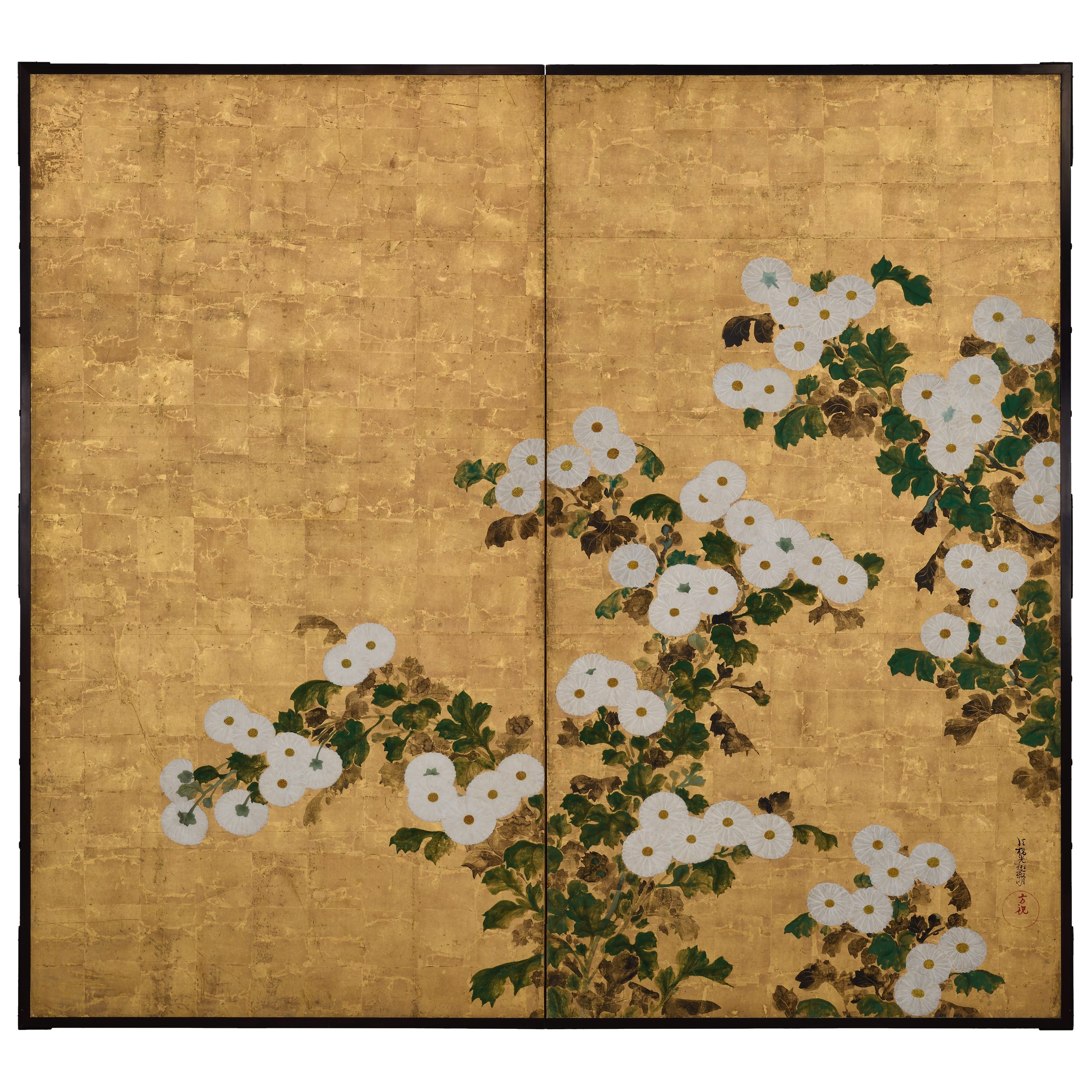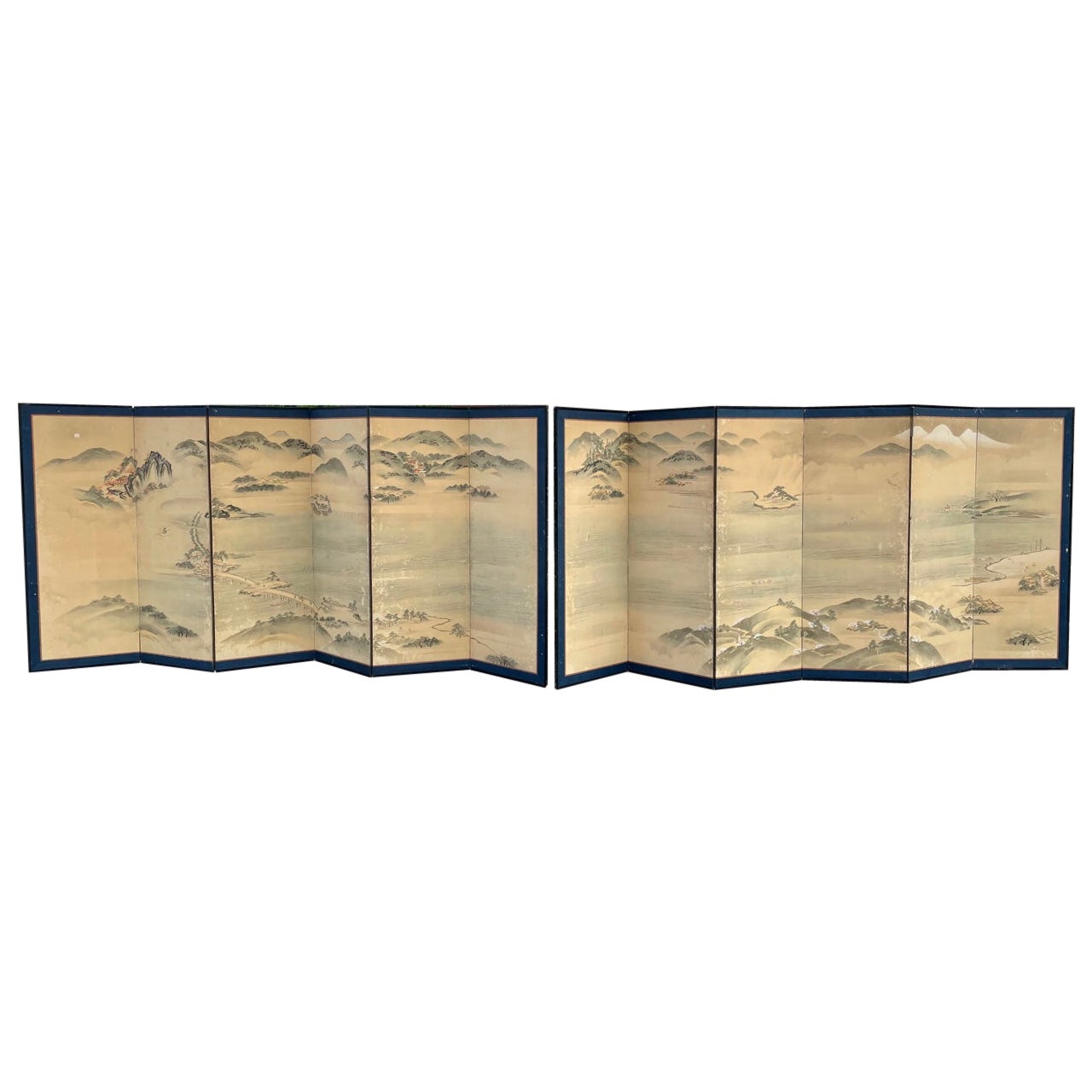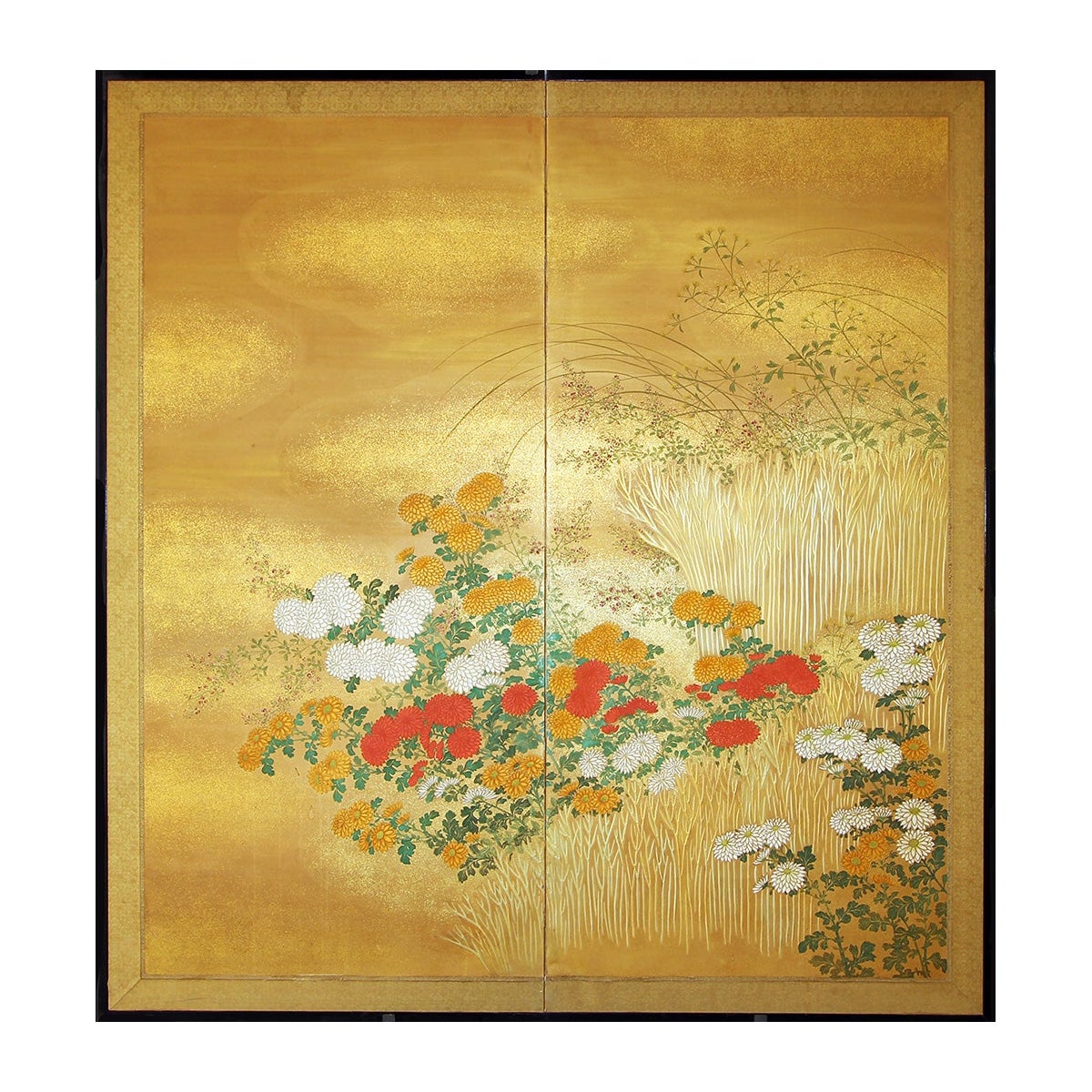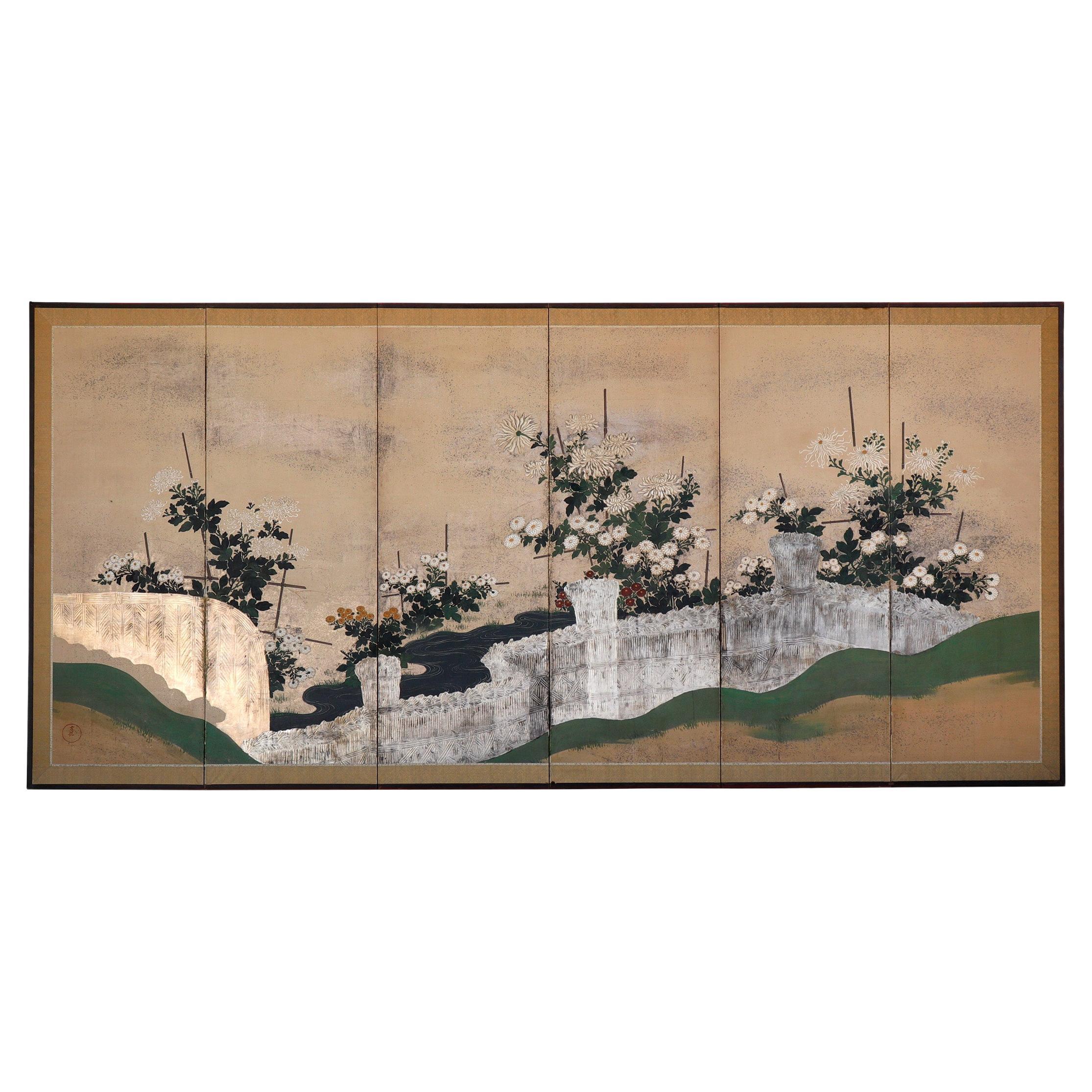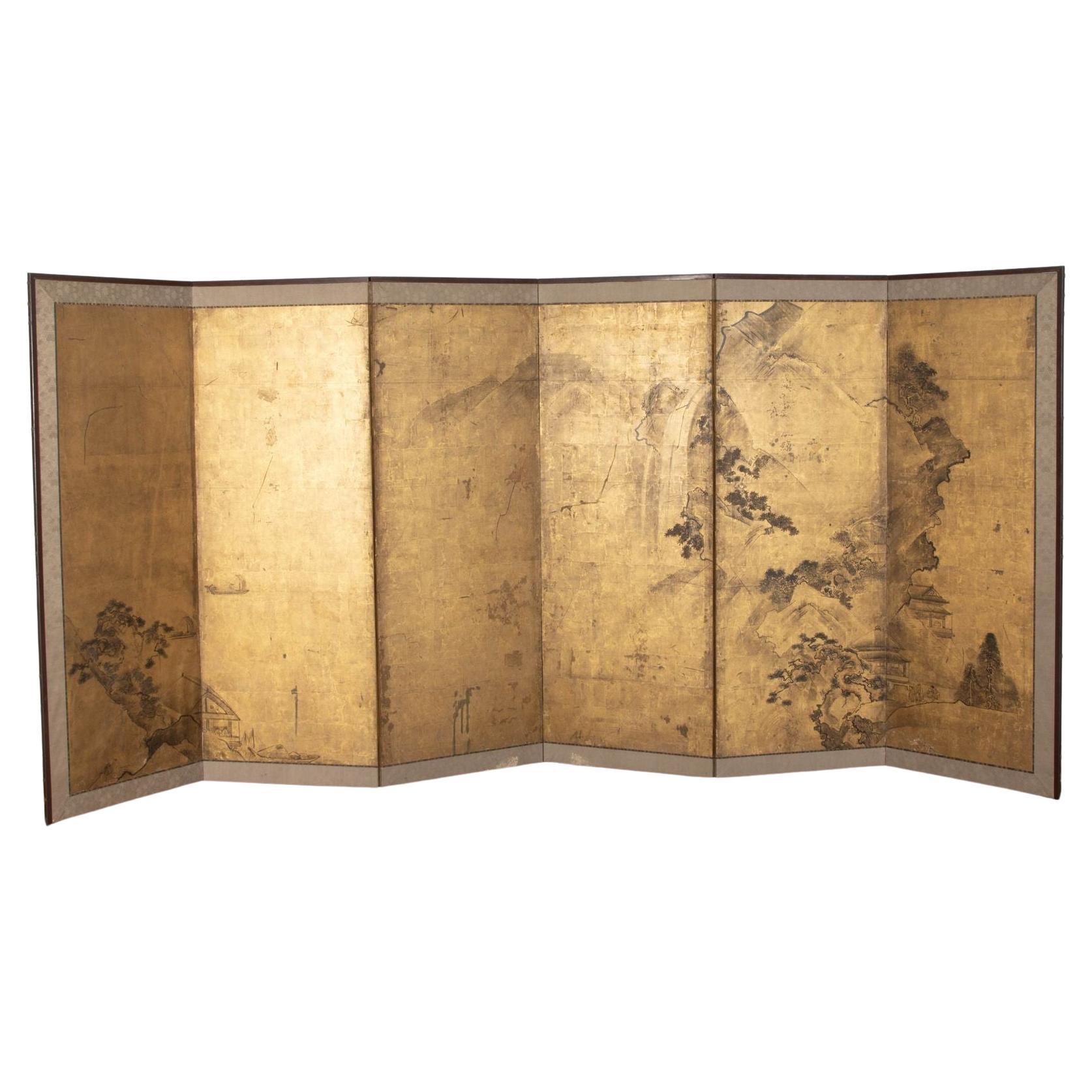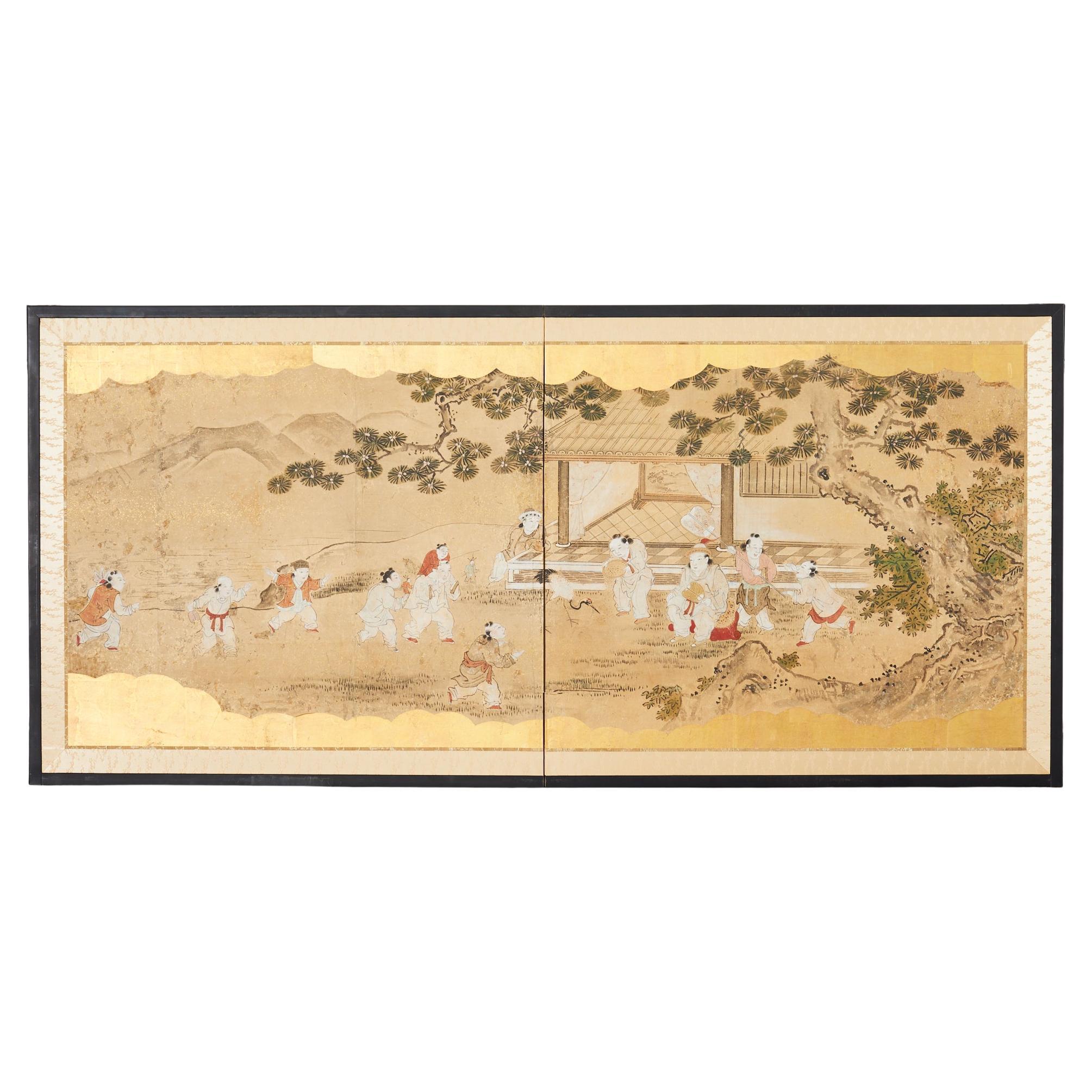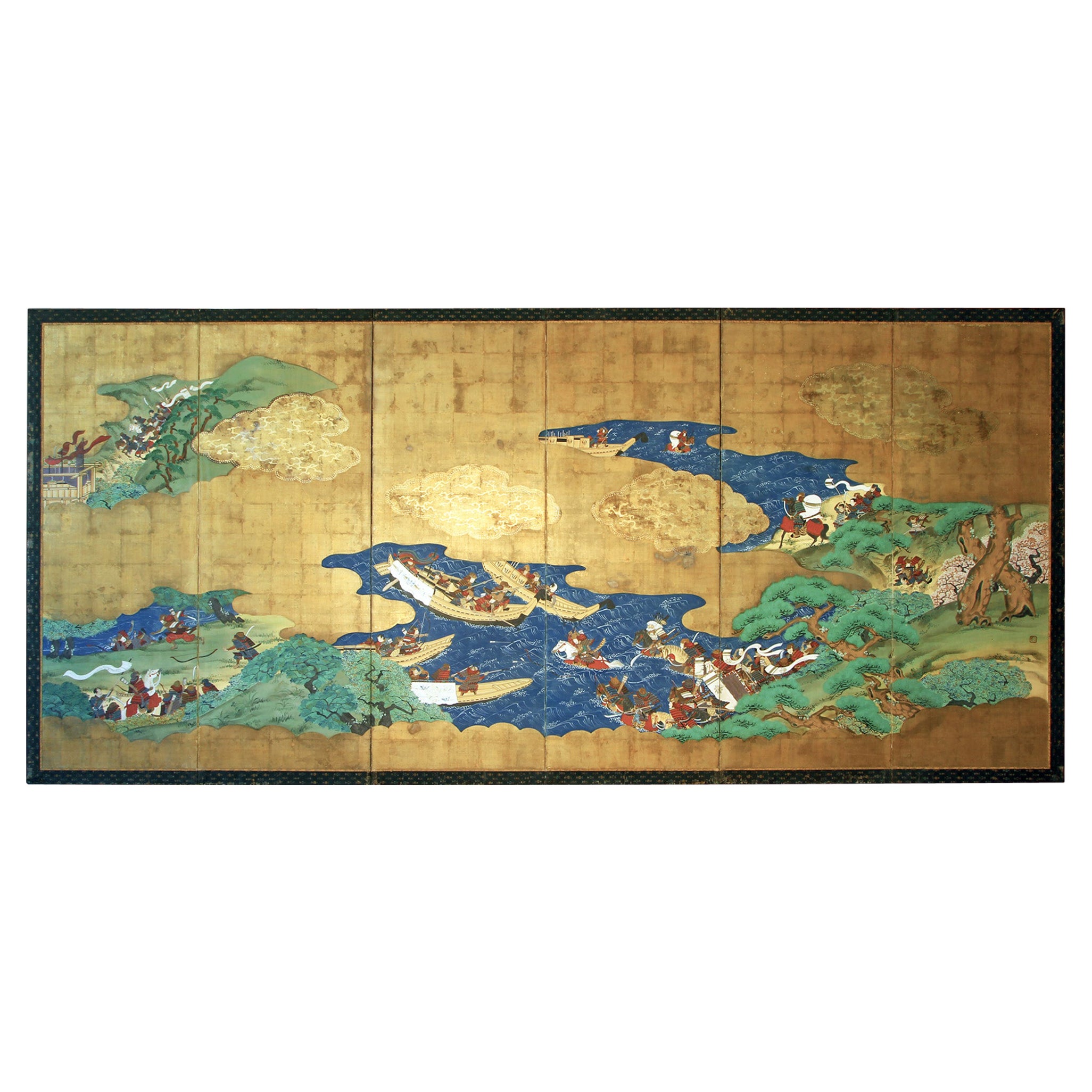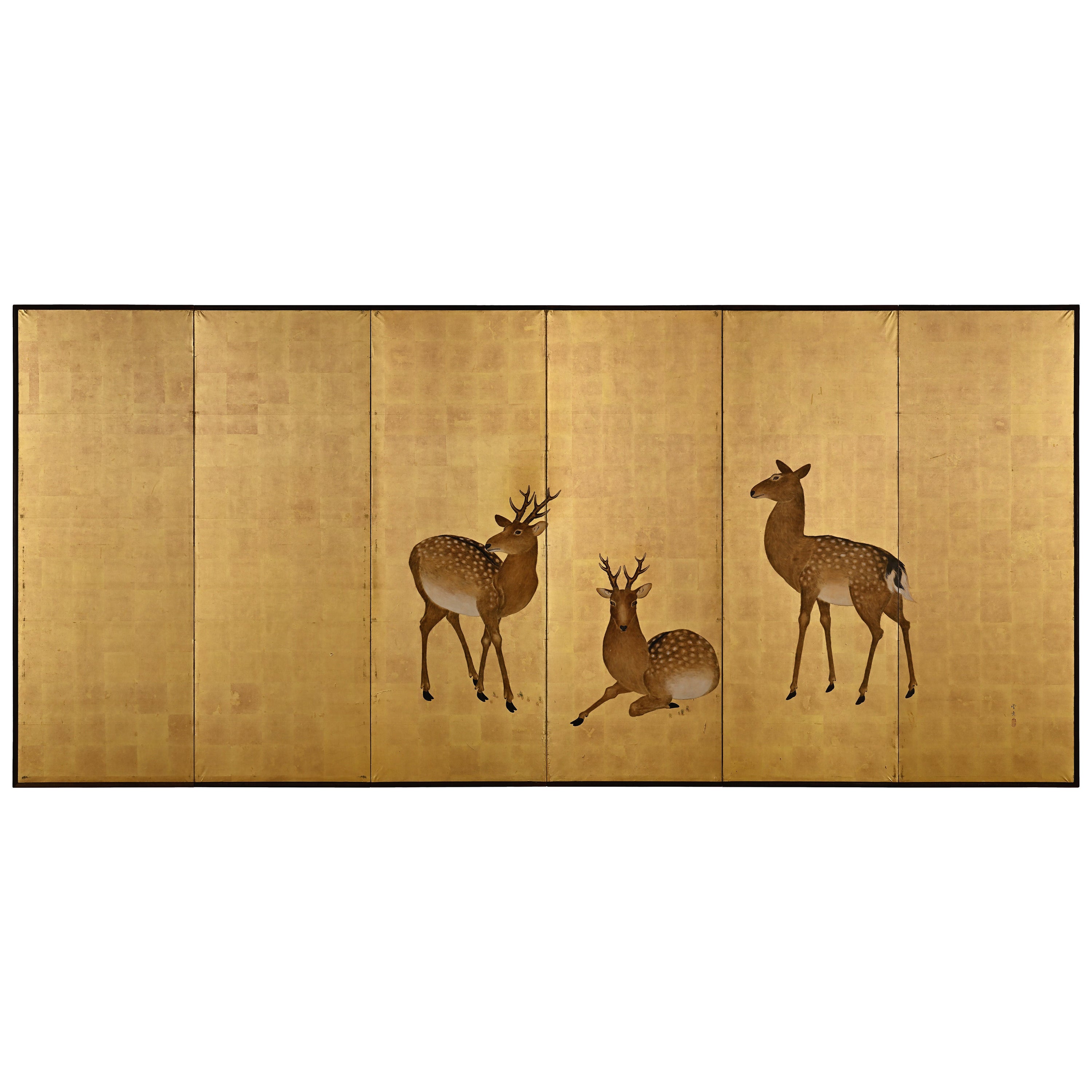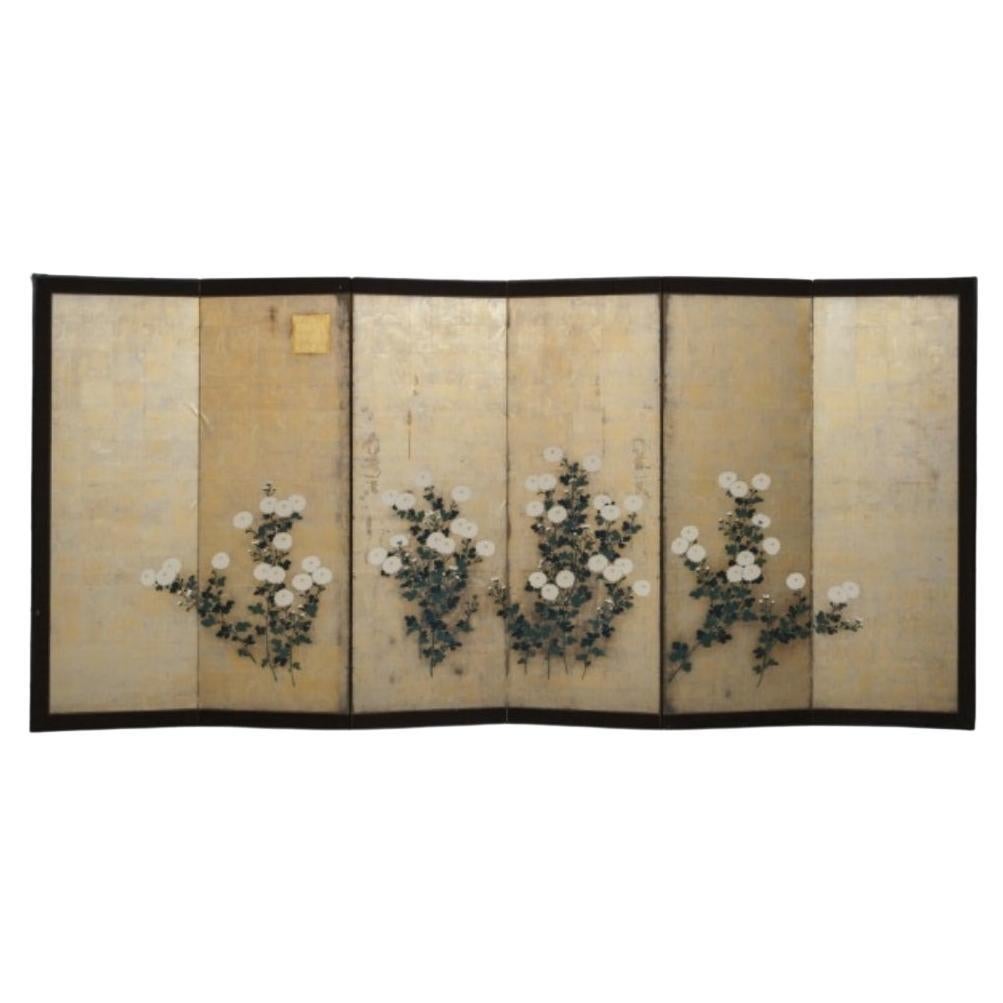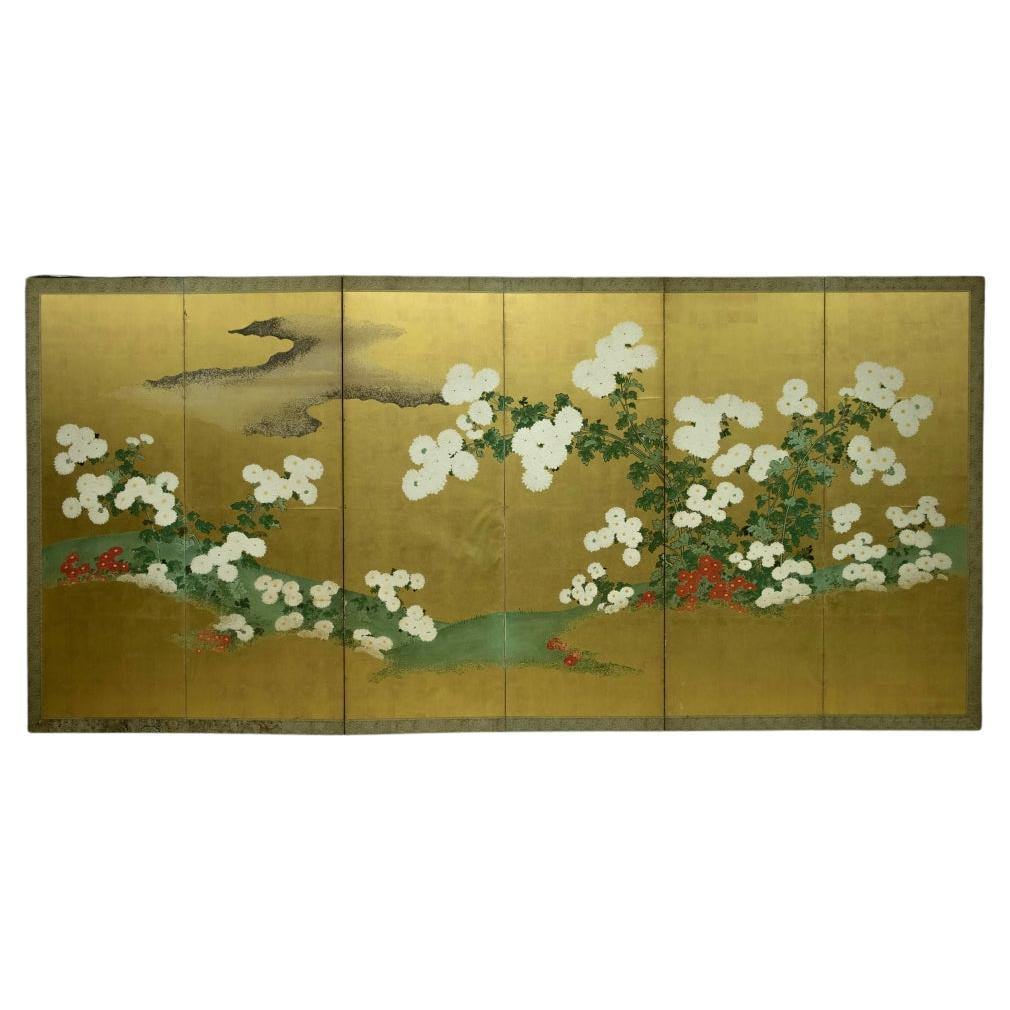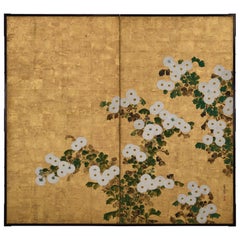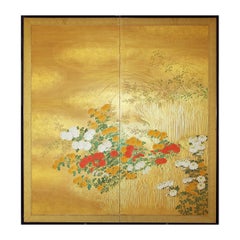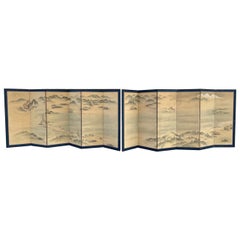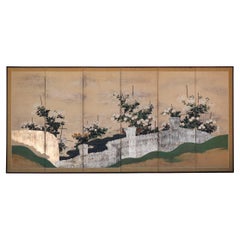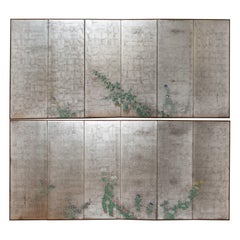
Pair of Japanese Folding Screens, Rinpa School, 19th Century
View Similar Items
1 of 12
Pair of Japanese Folding Screens, Rinpa School, 19th Century
About the Item
- Dimensions:Height: 148.43 in (377 cm)Width: 68.12 in (173 cm)Depth: 0.79 in (2 cm)
- Sold As:Set of 2
- Materials and Techniques:
- Place of Origin:
- Period:
- Date of Manufacture:circa 1850-1880
- Condition:
- Seller Location:Milano, IT
- Reference Number:Seller: 13831stDibs: LU4250216972892
Authenticity Guarantee
In the unlikely event there’s an issue with an item’s authenticity, contact us within 1 year for a full refund. DetailsMoney-Back Guarantee
If your item is not as described, is damaged in transit, or does not arrive, contact us within 7 days for a full refund. Details24-Hour Cancellation
You have a 24-hour grace period in which to reconsider your purchase, with no questions asked.Vetted Professional Sellers
Our world-class sellers must adhere to strict standards for service and quality, maintaining the integrity of our listings.Price-Match Guarantee
If you find that a seller listed the same item for a lower price elsewhere, we’ll match it.Trusted Global Delivery
Our best-in-class carrier network provides specialized shipping options worldwide, including custom delivery.You May Also Like
18th Century Japanese Rinpa Screen. White Chrysanthemums. School of Korin.
Located in Kyoto, JP
School of Ogata Korin
White Chrysanthemums
18th Century, Edo period.
A two-panel Japanese screen. Ink, color, gofun and gold leaf on paper.
Dimensions: H. 171 cm x W. 188 cm (67.5” x 74”)
On this two-panel Japanese screen we see blooming chrysanthemums, a flower which embodies the essence of autumn in Japan. Here the traditional floral theme has been simplified and stylized. The bright colors and asymmetrical composition against the delicate gold leaf create a luxurious and ornate work of art. Its background, a strikingly patinated grid of gold leaf, denies any sense of place or time and imbues everything with an ethereal glow. The leaves and stems of the plants are nothing more than pools of mottled color and ink without any outline whatsoever. These are typical Rinpa adaptations of traditional ink painting methods; tarashikomi, or diluted washes of color blended while very wet, and mokkotsu, or “bonelessness,” which creates forms without exterior outlines. The relief work of the rounded flower petals has been obtained by the moriage process (a mixture based on ground shells modeled on the surface of the paper).
On the lower right of the screen, the siganture “Hokyo Korin Jakumyo” and the “Hoshuku” seal can be read. Korin is Ogata Korin, famed for the Irises (Nezu Museum) and Red and White Plum Blossom (MOA Museum of Art) folding screens, both National Treasures. Korin worked in both Kyoto and Edo in the mid-Edo period. Korin was using the art name “Jakumyo” just after he received the Hokyo level, which was in 1701.
This particular screen was published in May of 1961 in the Japanese Sansai Fine Art Magazine*. An in depth article accompanies the photograph of the screen and and a photograph of the signature and seal. This article devotes much of its body to discussing the moriage technique, how it enlivens the chrysanthemum flowers and Korin’s specific skill in using the technique. The article goes on to discuss the most famous works of Korin, utilizing this technique, which were known at the time. Specifically a two-panel screen held in the Honolulu Museum which was discovered in the store-house of Takahashi Soan. A two-panel screen pair which the Nakano family own. A two-panel screen pair with chrysanthemums in moriage in fan designs owned by the Nomura family. Also a small folding screen featuring chrysanthemums held in the Yamato Bunkakan. The article goes on to say that this particular two-fold screen came from the Nijo family. Korin is known to have had a strong connection with the aristocratic Nijo family. The article explains that Korin received a lot of favors from the Nijo family and that this screen would have been gifted to them.
Since that time the Honolulu screen has been amended to ‘attributed to Ogata Korin’ and I do not know further details of the other 3 screens. Other Chrysanthemum screens...
Category
Antique 18th Century Japanese Edo Paintings and Screens
Materials
Gold Leaf
Two-panel screen of " Rinpa School"
By Japanese Studio
Located in Brescia, IT
Floral scene of a Rimpa School garden with polychrome chrysanthemum flowers.
Two-panel screen painted in pigment on gilded rice paper of beautiful size and well preserved.
Bold color...
Category
20th Century Japanese Showa Paintings and Screens
Materials
Gold Leaf
Pair of 19th Century Japanese Screens
Located in Bagshot, GB
A pair of large 19th century Japanses Screens of Japanese scenery.
The screens also come with a wooden crate which would have been built for them at a later date in order to move ...
Category
Antique 19th Century Asian Other Decorative Art
Materials
Paper
$3,645 Sale Price / set
30% Off
“Kiku Byobu”, a six-panel chrysanthemum folding screen, Rinpa School
Located in Point Richmond, CA
“Kiku Byobu”, a six-panel chrysanthemum folding screen, Rinpa School, Meiji Period (1869-1912).
Painted with several variations of white moriage chrysanthemums interspersed with sma...
Category
Antique Late 19th Century Japanese Meiji Paintings and Screens
Materials
Paper
19th Century Japanese Screen
Located in Gloucestershire, GB
Mid-19th Century Japanese sixfold screen with atmospheric Nanga style painting.
Black ink over gold leaf on paper, of a peaceful mountainous landscape emerging from mist. In the fore...
Category
Antique 19th Century Japanese Chinoiserie Paintings and Screens
Materials
Gold Leaf
19th Century Japanese Edo Screen Kano School Garden Terrace
Located in Rio Vista, CA
Fantastic 19th century Japanese Edo/Tokugawa period two-panel byobu screen featuring Chinese children frolicking on a garden terrace with a pavilion and large pine tree. Made in the ...
Category
Antique 19th Century Japanese Edo Paintings and Screens
Materials
Brass, Gold Leaf
Recently Viewed
View AllMore Ways To Browse
Silver Leaf Folding Screen
Japanese Screen Rinpa
Rinpa School
Autumn Grasses Japanese Six Fold Screen
Hand Painted Chinese Screen
Large Asian Screen
Japanese Painting On Paper 19th Century
Chinese Framed Panel
19th Century Japanese Scroll
Traditional Japanese Painting
Antique Silk Brocade
Chinese Painting On Silk
Japanese Silk Panel
Silk Panel Japan
Edo Period Paintings
Japanese Crane
Antique Japanese Silk Screen
Mid Century Chinese Screen
